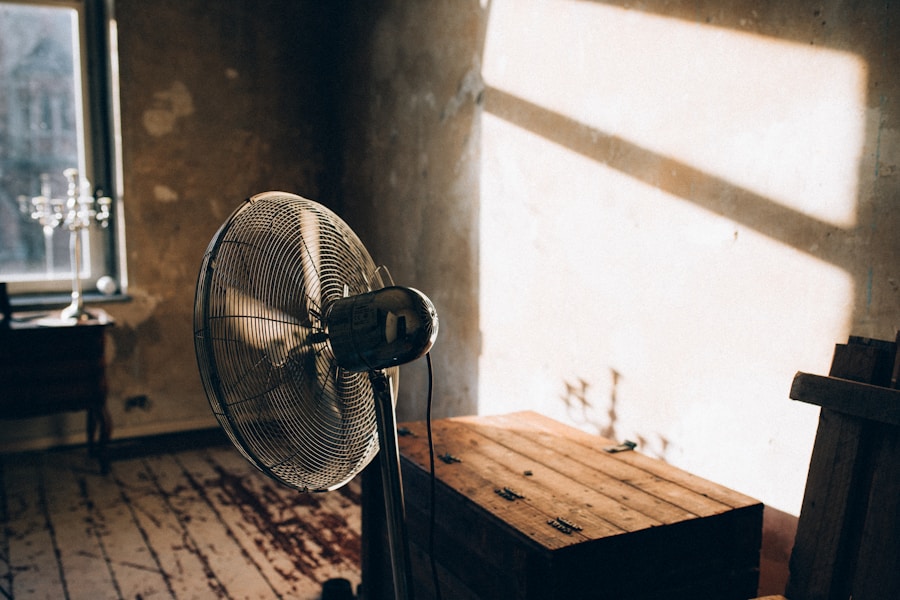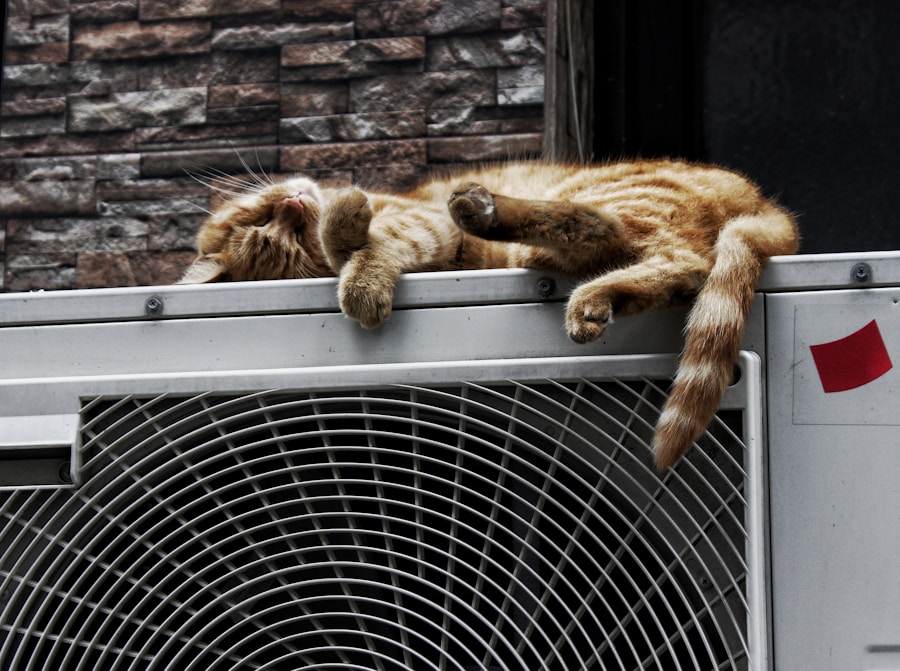As the summer months roll in, the sweltering heat can often feel unbearable, especially for those of us without the luxury of air conditioning. I find myself reminiscing about the days when I could simply flick a switch and enjoy a cool breeze, but those days are behind me. Instead, I have embarked on a journey to discover how to survive the summer heat without relying on this modern convenience.
The challenge has not only been about finding ways to keep cool but also about embracing a lifestyle that harmonises with the natural rhythms of the season. In my quest for comfort, I have learned that surviving summer without air conditioning is not just about enduring the heat; it’s about adapting and finding joy in the simplicity of natural cooling methods. I have come to appreciate the beauty of summer in its entirety, from the vibrant colours of blooming flowers to the long, sunlit evenings.
By embracing a few practical strategies, I have managed to create a comfortable living environment that allows me to thrive even on the hottest days. In this article, I will share my insights and experiences on how to navigate the summer heat without the aid of air conditioning.
Summary
- Surviving summer without AC is possible with the right natural cooling methods and lifestyle adjustments.
- Utilise natural cooling methods such as cross-ventilation, shading, and using fans to keep indoor temperatures comfortable.
- Manage indoor temperatures by closing curtains during the hottest part of the day and opening windows at night to let in cool air.
- Dress for the heat by wearing lightweight, breathable fabrics and light colours to reflect sunlight.
- Stay hydrated and eat cooling foods such as fruits and vegetables, and create a cool sleeping environment by using cotton sheets and keeping the bedroom well-ventilated.
Utilising Natural Cooling Methods
One of the first lessons I learned in my quest for comfort was the power of natural cooling methods. I discovered that simple adjustments in my home could make a significant difference in temperature. For instance, I began to open my windows during the cooler hours of the morning and evening, allowing fresh air to circulate throughout my living space.
This practice not only helped to lower indoor temperatures but also filled my home with the delightful sounds of chirping birds and rustling leaves, reminding me of the beauty of nature. I also experimented with various techniques to enhance airflow within my home. By strategically placing fans near open windows, I created a cross-breeze that effectively pushed hot air out while drawing in cooler air from outside.
Additionally, I found that using light-coloured curtains or blinds during the day helped to reflect sunlight rather than absorb it, keeping my rooms significantly cooler. These small changes transformed my living environment into a more pleasant space, allowing me to enjoy the summer months without feeling overwhelmed by heat.
Managing Indoor Temperatures

Managing indoor temperatures has become an essential part of my summer routine. I quickly realised that certain activities could inadvertently raise the temperature inside my home. For example, cooking during peak hours often resulted in a stifling atmosphere.
To combat this, I began preparing meals during the cooler parts of the day or opting for no-cook recipes that required minimal heat. Salads, cold pasta dishes, and fresh fruit became staples in my diet, allowing me to stay nourished while keeping my home cool. Another effective strategy I adopted was to limit the use of electronic devices that generate heat.
I made a conscious effort to turn off lights when they weren’t needed and unplug appliances that were not in use. This not only helped to reduce indoor temperatures but also contributed to energy savings. By being mindful of my energy consumption, I found that I could create a more comfortable living environment while also being environmentally responsible.
Dressing for the Heat
| Activity | Recommended Clothing |
|---|---|
| Outdoor Exercise | Lightweight, moisture-wicking clothing |
| Beach Day | Swimwear, sun hat, sunglasses |
| City Sightseeing | Loose-fitting, breathable clothing, sun hat |
| Outdoor Work | Light-coloured, long-sleeved shirt, wide-brimmed hat |
| Outdoor Dining | Lightweight, flowy clothing |
As summer approached, I realised that my wardrobe needed an overhaul to accommodate the rising temperatures. I began to prioritise lightweight, breathable fabrics such as cotton and linen, which allowed my skin to breathe and helped wick away moisture. Loose-fitting clothing became my go-to choice, as it provided comfort and freedom of movement while preventing that sticky feeling that often accompanies hot weather.
I also discovered the importance of colour when it came to dressing for the heat. Light-coloured clothing reflects sunlight rather than absorbing it, making it a more sensible choice for hot days. I found myself gravitating towards whites, pastels, and other light shades that not only kept me cooler but also brightened my mood.
Accessories like wide-brimmed hats and sunglasses became essential companions during outdoor excursions, providing both protection from the sun and a touch of style.
Hydrating and Eating for Coolness
Staying hydrated is crucial during the hot summer months, and I quickly learned that water is my best friend. I made it a habit to carry a reusable water bottle with me wherever I went, ensuring that I was consistently sipping throughout the day. Infusing my water with slices of citrus fruits or refreshing herbs like mint added a delightful twist that made hydration feel like a treat rather than a chore.
In addition to drinking plenty of water, I discovered that my food choices could also help keep me cool. Incorporating hydrating foods such as cucumbers, watermelon, and strawberries into my meals not only provided essential nutrients but also contributed to my overall hydration levels. I began experimenting with smoothies and chilled soups, which were not only refreshing but also packed with vitamins and minerals.
By focusing on light, nutritious meals, I found that I could maintain my energy levels without feeling sluggish or overheated.
Creating a Cool Sleeping Environment

Regulating Body Temperature
I invested in breathable bed linens made from natural fibres, which helped regulate body temperature while I slept. Additionally, I discovered the benefits of using a fan in my bedroom to circulate air while I slept, creating a gentle breeze that lulled me into a peaceful slumber.
Keeping the Bedroom Cool
I also made it a point to keep my bedroom dark during the day by using blackout curtains or shades. This simple adjustment prevented heat from building up during the day and allowed me to enjoy cooler temperatures at night.
A Cool Start to the Night
On particularly hot evenings, I would take a cool shower before bed to lower my body temperature further, ensuring that I could drift off into a comfortable sleep without tossing and turning due to discomfort.
Staying Active Safely in the Heat
Maintaining an active lifestyle during summer can be challenging when temperatures soar. However, I found ways to stay active while prioritising safety in the heat. Early morning or late evening workouts became my preferred times for exercise when temperatures were more bearable.
Whether it was going for a jog or practising yoga outdoors, these cooler hours allowed me to enjoy physical activity without risking overheating. I also explored alternative forms of exercise that kept me cool while still providing an effective workout. Swimming became one of my favourite activities during the summer months; not only did it offer a refreshing escape from the heat, but it also provided an excellent full-body workout.
Additionally, indoor activities such as dance classes or fitness videos allowed me to stay active without exposing myself to excessive heat.
Conclusion and Additional Resources
Surviving summer without air conditioning has been an enlightening experience for me. Through utilising natural cooling methods, managing indoor temperatures effectively, dressing appropriately for the heat, staying hydrated and eating wisely, creating a comfortable sleeping environment, and finding safe ways to stay active, I have learned to embrace the season with open arms. Each strategy has contributed to a more enjoyable summer experience, allowing me to appreciate the beauty of this vibrant time of year.
For those seeking additional resources on surviving summer without AC, there are numerous websites and books dedicated to sustainable living and natural cooling techniques. Local community centres often offer workshops on energy efficiency and eco-friendly practices that can further enhance one’s ability to cope with heat without relying on air conditioning. By sharing our experiences and knowledge with one another, we can create a supportive community that thrives even in the hottest months of the year.
If you’re looking to make your home more environmentally friendly this summer, consider greening up your yard with some landscaping tips from Eco Friendly Home and Garden. From planting native species to using rain barrels for water conservation, there are plenty of ways to make your outdoor space more sustainable. And if you’re thinking about upgrading your boiler, check out their article on the best eco-friendly boilers for a sustainable home here.
FAQs
What are some tips for surviving a summer without AC?
Some tips for surviving a summer without AC include staying hydrated, using fans, keeping windows and curtains closed during the hottest part of the day, and taking cool showers.
What are the health risks of not having AC in the summer?
The health risks of not having AC in the summer include heat exhaustion, heat stroke, dehydration, and exacerbation of certain medical conditions such as asthma and heart disease.
How can I keep my home cool without AC?
You can keep your home cool without AC by using fans, keeping windows and curtains closed during the hottest part of the day, using reflective window film, and creating cross-ventilation by opening windows on opposite sides of the house.
What are some alternative cooling options for a summer without AC?
Some alternative cooling options for a summer without AC include using portable air coolers, placing bowls of ice in front of fans, using cooling towels, and creating DIY air conditioning units using frozen water bottles and fans.
What are some signs of heat-related illness to watch out for in the summer?
Some signs of heat-related illness to watch out for in the summer include excessive sweating, dizziness, nausea, rapid heartbeat, and confusion. It’s important to seek medical attention if you or someone else experiences these symptoms.


